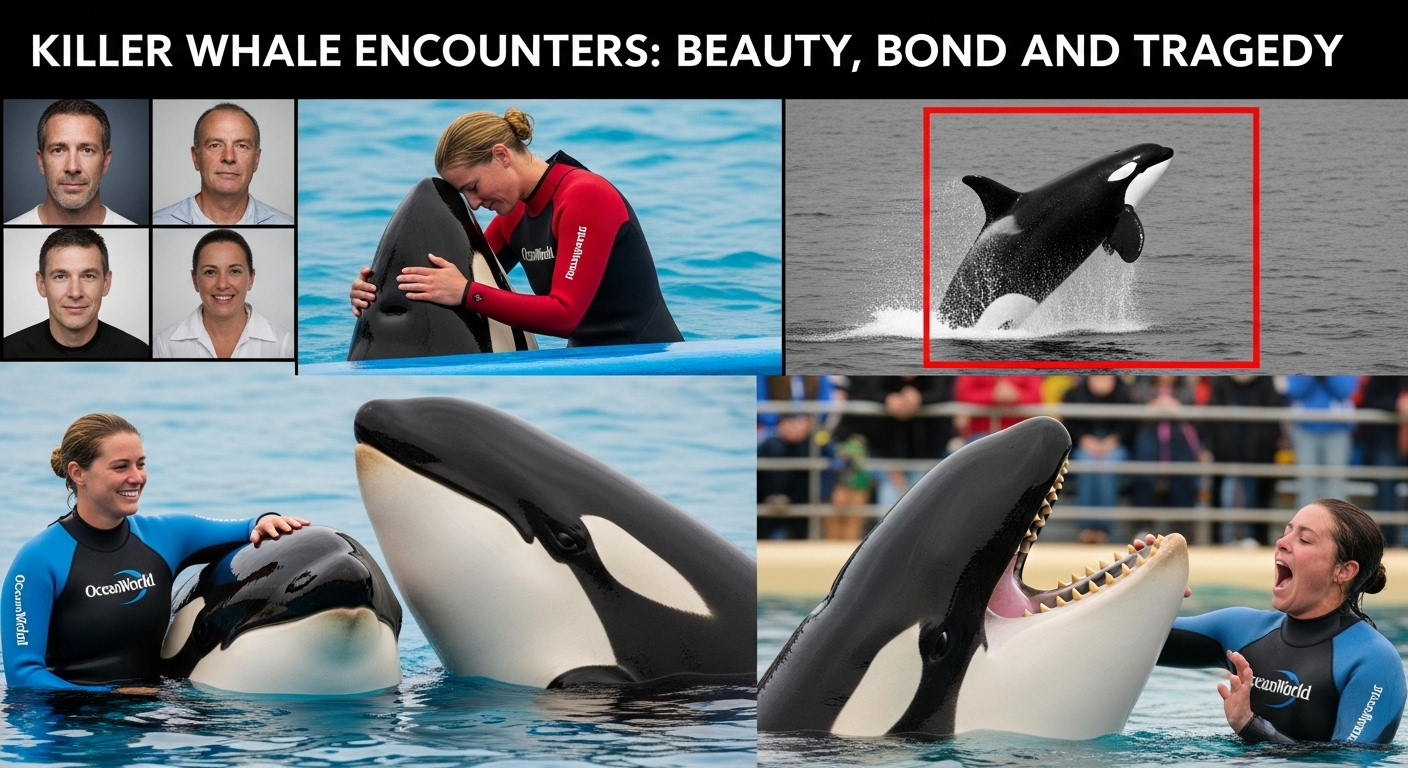Killer Whale Encounters: A Dance of Drama, Danger, and Deep Connection
The ocean, in its vast and mysterious expanse, is home to one of the most intelligent and powerful predators on Earth: the killer whale. Also known as orcas, these magnificent creatures have long captured our imagination, starring in both our nightmares and our most awe-inspiring dreams. Recent years have seen a surge in documented encounters between humans and killer whales, ranging from heart-stoppingly dramatic and dangerous incidents to moments of profound, unexplainable bonding.
The Drama and the Danger: A Rise in Risky Encounters
A wave of dramatic encounters has recently put sailors on high alert, particularly in the Strait of Gibraltar and surrounding waters. Since May 2020, a specific subpopulation of Iberian orcas has been interacting with sailboats, often resulting in significant damage.[1][2] These encounters are not described as overtly aggressive by experts, but rather as a learned behavior focused on the boats’ rudders.[3] The orcas, often a group of juveniles, seem to be playing with or attempting to stop the vessels, sometimes leading to the boats being disabled and, in some cases, even sinking.[1][2][3]
In one recent incident in July 2025, two sailors had to be rescued after a pod of orcas targeted their yacht off the coast of northern Spain.[3][4] While such incidents are more common further south, this encounter has raised concerns about the behavior spreading.[4] The consistent targeting of rudders has led some scientists to believe it might be a “fad” or a form of play that has been taught and learned within the pod.[5][6] Boaters in the region are now advised to take precautions, such as turning off their engines and lowering sails if approached.[3]
While wild orca attacks on humans are incredibly rare, with only one documented case of a wild orca biting a human in 1972, the situation is different for their captive counterparts.[7][8] There have been numerous incidents of captive orcas causing serious injury and even death to trainers.[7][8][9][10] These tragic events have sparked intense debate about the ethics of keeping such intelligent and powerful animals in captivity.[9][10]
A Surprising Bond: When Predator and Human Connect
Despite the recent spate of unnerving events and the inherent dangers of interacting with a top predator, there is a compelling and often overlooked side to the human-orca relationship: a deep and sometimes inexplicable bond.
History provides a fascinating example of a cooperative relationship between humans and killer whales. In Twofold Bay, Australia, Aboriginal people and later European whalers developed a mutualistic hunting partnership with orcas that lasted for generations.[11][12] The orcas would herd baleen whales into the bay, alerting the whalers, who would then harpoon the prey. The whalers would in turn share the spoils with the orcas, a practice known as the “Law of the Tongue.”[11] This remarkable collaboration highlights a level of interspecies communication and understanding that is truly extraordinary.
More recently, scientific studies have documented wild killer whales attempting to share food with humans. In a study spanning 20 years, researchers recorded 34 instances of orcas offering fish, mammals, and even seaweed to people.[13] This behavior, which is a common way for orcas to build social bonds with each other, suggests a potential interest in forming a relationship with humans.[13]
There are also touching stories of individual orcas seeking out human companionship. The story of Luna, a young orca who became separated from his pod in Nootka Sound, British Columbia, is a poignant example.[14] Luna actively sought out interactions with boats and people, displaying a friendliness that captivated the local community.[14] Similarly, the story of Namu, the first orca displayed in captivity in Seattle, and his deep bond with his owner, Ted Griffin, helped to change public perception of these animals.[15]
A Complex Coexistence
The relationship between humans and killer whales is a complex tapestry woven with threads of fear, fascination, and a surprising capacity for connection. The recent dramatic encounters with yachts serve as a stark reminder of their power and wildness. Yet, the stories of cooperation and shared moments of connection reveal a depth of intelligence and social complexity that continues to astound us.
As we continue to share the oceans with these magnificent creatures, it is crucial to approach them with respect and a desire to understand their world. From the thrill of a whale watching tour to the vital conservation efforts aimed at protecting endangered populations, our actions have a direct impact on their survival.[16][17][18][19] The ongoing saga of our encounters with killer whales, in all its drama, danger, and moments of bonding, ultimately reflects our own evolving relationship with the wild heart of the ocean.



